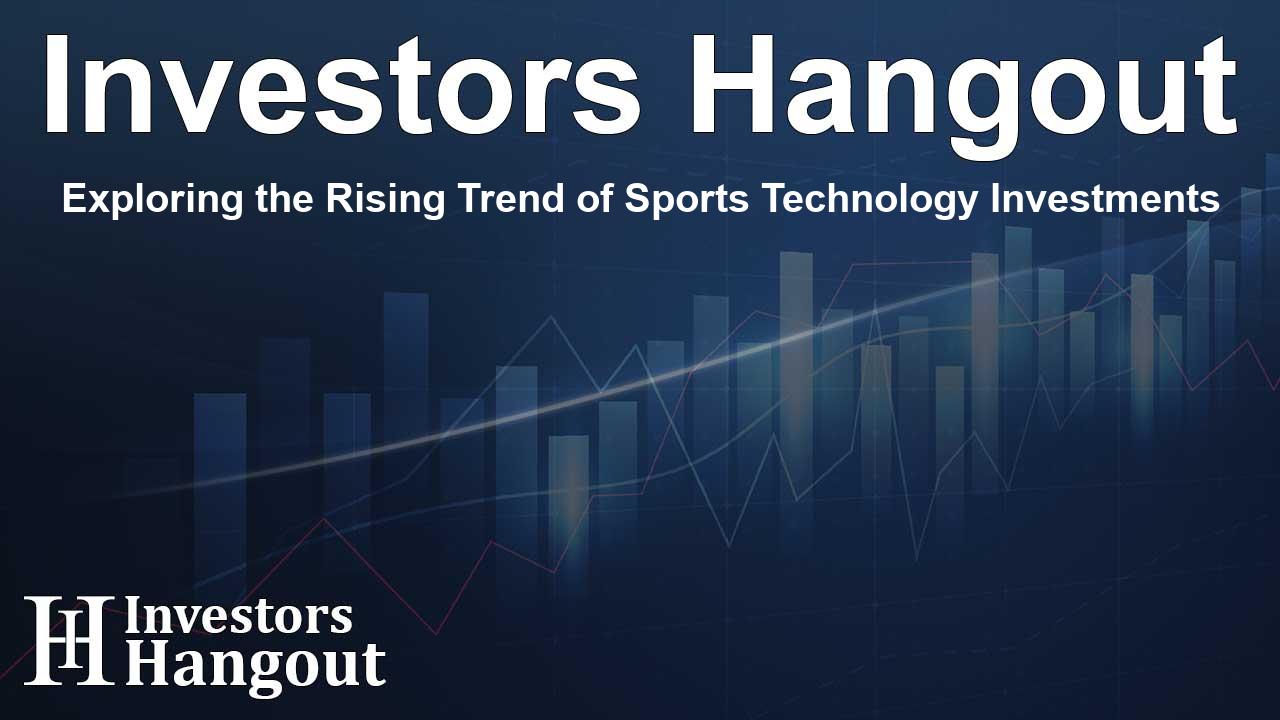Exploring the Rising Trend of Sports Technology Investments

Sports Technology Market Size and Growth Insights
The Sports Technology Market is experiencing remarkable growth, with its size expected to soar from USD 15.51 billion in 2023 to an astounding USD 82.70 billion by 2032. This surge represents a compound annual growth rate (CAGR) of 20.45% during the forecast period of 2024-2032. Innovations in AI and digital technologies are at the forefront of this transformation, empowering both athletes and fans.
Transformative Impact of AI and Digital Technologies
Recent advancements in AI and digital technologies are revolutionizing the sports landscape, significantly enhancing fan engagement and athlete performance. AI has come to play a pivotal role in refining the spectator experience, helping to improve athlete safety, and optimizing event management. For instance, organizations are implementing AI for tasks ranging from monitoring social media interactions during major events to creating digital replicas of venues for improved accessibility.
Growth of E-Sports and Athlete Performance Enhancement
The rise of e-sports, particularly in markets such as Asia, is also contributing to this rapid growth. Substantial funding is being funneled into platforms and organizations driving this sector, with examples including Virtual Sports Platform Organization raising USD 265 million and Animoca Brands securing USD 120 million. Technologies like AI and machine learning are not only augmenting training for professional athletes but are also creating more personalized fan interactions. This escalation highlights how technology is reshaping not just how athletes train but how fans engage with sports.
Leading Players in the Market
This robust market is spearheaded by numerous key players known for their innovative products. Companies such as Catapult Sports, which specializes in wearable GPS devices and athlete monitoring systems, and IBM, with its Watson AI for sports analytics, are pivotal in driving this market forward. Other noteworthy mentions include HUDL, STATSports, and Genius Sports, each contributing unique technologies that enhance sports performance and analytics.
Identifying Market Drivers and Key Segments
In 2023, the Devices segment emerged as the heavyweight in the sports technology market, capturing approximately 35% of the overall share. The increasing demand for wearable technology, including fitness trackers and biometric sensors, is propelling this segment forward. These devices provide critical health metrics in real-time, including heart rate and recovery data, catering to both elite athletes and everyday fitness enthusiasts.
Regional Analysis: North America's Dominance
North America leads the market, with around 40% of total revenue attributed to this region. The integration of advanced technologies within sports organizations across the United States and Canada has fueled this growth. Major leagues such as the NBA and NFL are particularly proactive in adopting these innovations, focusing on enhancing player performance and safety while improving audience engagement.
Recent Developments in Sports Technology
Several recent advancements underscore the dynamic nature of this sector. For example, Chyron's introduction of Football-Specific Features in its latest software update is enhancing sports broadcasting by improving the accuracy of live game analysis. Likewise, KINEXON's tailored player tracking technology for women’s sports reflects an increased focus on inclusivity and personalized athletic training.
Frequently Asked Questions
What is the growth forecast for the Sports Technology market?
The Sports Technology market is projected to grow from USD 15.51 billion in 2023 to USD 82.70 billion by 2032, representing a CAGR of 20.45%.
Which technologies are driving the Sports Technology market?
Artificial intelligence, machine learning, and wearable devices are among the leading technologies reshaping the sports technology landscape.
Who are the key players in the Sports Technology market?
Key players include Catapult Sports, IBM, HUDL, STATSports, and Genius Sports, each known for their innovative contributions to the market.
How is North America positioned in the Sports Technology market?
North America commands a significant share of the market, accounting for about 40% of revenues due to extensive adoption of advanced technologies by sports organizations.
What are the main growth drivers in the market?
The primary drivers include the increasing demand for wearable devices and the growing focus on AI technologies for enhancing athlete performance and safety.
About The Author
Contact Evelyn Baker privately here. Or send an email with ATTN: Evelyn Baker as the subject to contact@investorshangout.com.
About Investors Hangout
Investors Hangout is a leading online stock forum for financial discussion and learning, offering a wide range of free tools and resources. It draws in traders of all levels, who exchange market knowledge, investigate trading tactics, and keep an eye on industry developments in real time. Featuring financial articles, stock message boards, quotes, charts, company profiles, and live news updates. Through cooperative learning and a wealth of informational resources, it helps users from novices creating their first portfolios to experts honing their techniques. Join Investors Hangout today: https://investorshangout.com/
The content of this article is based on factual, publicly available information and does not represent legal, financial, or investment advice. Investors Hangout does not offer financial advice, and the author is not a licensed financial advisor. Consult a qualified advisor before making any financial or investment decisions based on this article. This article should not be considered advice to purchase, sell, or hold any securities or other investments. If any of the material provided here is inaccurate, please contact us for corrections.
